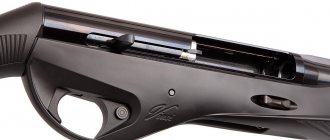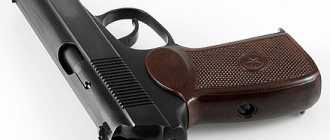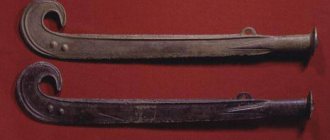| Hand grenade model 1914 RG-14 | |
| Hand grenade model 1914 RG-14 | |
| Type | anti-personnel hand grenade |
| A country | Russian Empire Russian Empire USSR USSR |
| Service history | |
| Years of use | from 1914 to 1930 |
| Wars and conflicts | First World War Civil War First Soviet-Finnish War Soviet-Polish War Conflict on the Chinese Eastern Railway |
| Production history | |
| Constructor | V. I. Rdutlovsky |
| Characteristics | |
| Weight, kg | 0,7 — 0,72 |
| Length, mm | 200 — 235 |
| Diameter, mm | 57 — 59 |
| Explosive | Ammonal, TNT, Melinite, Favier composition |
| Mass of explosive, kg | 0,3 — 0,4 |
| Detonation mechanism | The burning time of the retarder is 4 seconds. |
RG-14
(Hand grenade of the Rdultovsky model of 1914) is a hand fragmentation grenade created just before the First World War by artillery captain Vladimir Iosifovich Rdultovsky based on the design of his previous grenade - RG-12[1].
Story
Soon after the outbreak of the First World War, the increased need of troops for hand grenades (which turned out to be an effective weapon in trench warfare) was identified, and the production of RG-14 grenades was increased[2].
In December 1914, the commander of the 4th Army, General A.E. Evert, noted in an order for the army the insufficiently active use of hand grenades and demanded that subordinate commanders distribute the available stocks of hand grenades to infantry units, train infantrymen in handling hand grenades under the guidance of engineer officers and actively use hand grenades in the defense and attack of strong points[3].
On October 4, 1915, the commander of the 5th Army, cavalry general P. A. Plehve, gave order No. 231 to form “special bomb-throwing teams” for each infantry company [2] [4].
On October 8, 1915, in a telegram from Headquarters, it was proposed to create grenadier platoons under infantry companies[5].
Since the military industry did not fully meet the army’s needs for grenades, commanders of infantry units were recommended to supply hand grenades to the soldiers of the first two of the four rifle chains when attacking in waves (at the same time, the soldiers of the third rifle chain were used to move machine guns and ammunition, and the fourth served as a reserve)[6 ].
On December 13, 1915, order No. 646 on the creation of grenadier platoons was given by the commander of the 9th Army. In accordance with the order, hand grenades were considered as the main weapon of the grenadiers (each soldier was recommended to be armed with 7-8 hand grenades, for carrying which they were given two canvas bags, worn crosswise over the left and right shoulders)[4]. At the end of 1915, the formation of grenadier platoons began under rifle and infantry companies of the Russian army. Each grenadier platoon had a staff strength of 53 soldiers, with hand grenades considered the main weapon of the grenadiers (each soldier was armed with 10 hand grenades)[2]. In addition to hand grenades, at the suggestion of General A.E. Evert, grenadier platoons received sapper tools[5].
In 1916, “Instructions for throwing hand bombs and grenades” was published, which discussed the types of grenades used in the Russian army and methods of their use[4].
In March 1916, the release of hand grenades mod. In 1914, the Troitsk equipment plant began.
During the Civil War, the grenade was the main type of grenade of the Red Army[7].
Production of hand grenades mod. 1914 was discontinued after the hand grenade mod. 1914/30.
Hand grenade of the Rdultovsky model. 1914
The hand grenade of the Rdultovsky system became the main one in the Russian army during the First World War and “served” in the Red Army for a long time. The Military Department's work on hand grenades was stimulated by the experience of positional battles of the Russo-Japanese War of 1904-1905.
RDULTOVSKY GRENADES
Among others, Captain V.I. Rdultovsky, who served in the Main Artillery Directorate (GAU), took up this topic. At the end of 1909 - beginning of 1910, he developed two samples of grenades; small “for hunting teams” and large “for serf war”. Grenades were then considered an engineering tool, and on September 22, 1911, the Engineering Committee of the Main Engineering Directorate (GIU) examined several systems of hand grenades from different designers. The greatest interest was caused by Rdultovsky's sample with a box-shaped tin body, a wooden handle and a remote fuse. It was adopted for service under the designation “grenade arr. 1912." It is significant that the grenade allowed only factory production, that is, the military department abandoned the previously popular idea of preparing grenades directly in the troops.
Shortly before the start of the First World War, Rdultovsky improved the design, and the “grenade mod. 1914." During the war it will become the main one, but by no means the only one.
GRENADE DEVICE mod. 1914
Structurally, the grenade consisted of a thin shell of tinplate, an impact mechanism, a charge, fragments and a fuse. The shell included a body with a lid, a funnel, a handle and a trim. A striking mechanism was mounted in the side groove, which included a firing pin with a trigger, a mainspring, a clutch and a pin. The cocked firing pin was held by the hook of the cocking lever, which was mounted on an axis in the groove of the handle and equipped with a release spring. The safety pin, blocking the trigger window, held the firing pin. An additional safety feature was a ring placed on the handle and a lever pressed into the handle.
Read: F-1 Grenade
The fuse consisted of an aluminum ignition tube with two elbows, which housed an igniter capsule, a remote tube with a remote compound (stopin), and a detonator capsule in a measuring thimble.
An explosive substance was poured into the shell body; two gratings with cross-shaped slots were placed between it and the shell, which ensured the formation of small fragments during the explosion. By the beginning of the World War, the main high explosives for filling shells in Russia were melinite and the newly introduced TNT. However, soon after the start of the war in Russia, as in other countries, it was necessary to actively engage in the production of surrogate ammonium nitrate explosives (ammonal, schneiderite) for filling ammunition, including hand grenades.
When equipping a grenade with melinite or TNT, an additional detonator was used. An ammonal charge did not require such a detonator.
PREPARATION AND THROWS
The grenade was carried with the firing pin released separately from the fuse. Before throwing, the fighter had to pull the firing pin until it was captured by the lever, place a safety pin across the trigger window, load the grenade, that is, slide the “door” on the housing cover, insert the fuse with a detonator cap into the charge channel and return the “door” to its place. Preparation required eight to nine operations.
Read: Anti-tank missile system "Fagot" (9K111)
To throw, the fighter held the grenade in his hand so that the ring was placed between the middle and ring fingers, pressed the lever, holding the ring with his thumb, and moved the safety pin with the thumb of his free hand. When thrown, the ring remained in the hand, the lever was pressed back by a spring and the firing pin was released, the firing pin broke the igniter capsule. The fire was transmitted along the threads of the stopin to the remote composition, then to the detonator cap and the detonator, which detonated the explosive charge.
PRODUCTION AND MODIFICATIONS
The experience of the first months of fighting revealed the urgent need of troops for hand grenades as an important means of close combat. The procurement of grenades was carried out through the Main Military Technical Directorate, the successor to the State Inspectorate. Production of grenades arr. 1912 and 1914 were installed in state-owned technical artillery establishments, but production increased too slowly. In 1915, the procurement business was transferred to the GAU; grenades were included among the “main means of artillery supply.” Private industry factories were involved in production, but the distribution of orders and the start of deliveries took time, and only state-owned factories could equip grenades with explosives and supply fuses. Only by the summer of 1916 did grenade production reach the desired level of 3.5 million pieces per month. In total, in 1914-1917, Russian factories supplied the army with more than 16,532,300 hand grenades - mostly mod. 1912 and 1914. The scope of use of hand grenades expanded. To destroy wire barriers, a “combined” grenade was used - on the body of a grenade mod. 1914, an additional charge in a tin shell was put on, so that the total mass of the charge reached 1.65 kg, and the grenades 2.05 kg. The grenade was equipped with cords with weights - for hanging on an obstacle.
Read: Underbarrel grenade launcher GP-30 (6G21) “Obuvka”
Chemical Committee of the GAU based on grenade arr. 1914 developed a “chemical grenade mod. 1914" (also called the “grenade model 1917”), loaded with 550 g of “asphyxiating liquid” U.S.H. An “incendiary thermite grenade mod. 1914." Its body was equipped with thermite, and a special fuse was used to ignite it.
MODERNIZATION
After the First World War and the Civil War, grenade mod. 1914 became the main offensive grenade of the Red Army. In anticipation of the creation and production of new models of pomegranate, it underwent modernization. Grenade arr. 1914/30 already belonged to the offensive-defensive type. The main novelty was a removable fragmentation cover (“shirt”), which produced heavy fragments with a large damage radius. The hammer and lever spring have changed. A grenade with a cover formed about 3 thousand fragments upon explosion, including heavy ones, without a cover - 2800 light fragments with a smaller radius of damage. Despite the adoption of the hand grenade mod. 1933 (RGD-33) of the same type, grenade mod. 1914/30 remained in service for a long time. It was also used during the Great Patriotic War.
You might be interested:
- RKG-3 hand grenade
- RGD-5 hand grenade
- RGO hand grenade
- Mils grenades
- "Stilhandgranate" - melee "potato masher"
- Mills hand grenades
Subscribe to
our channel in Yandex.Zen
Description
In comparison with the Rdultovsky model grenade. 1912, RG-14 was more convenient to use (since it had less weight and a more convenient shape)[1].
The grenade consisted of a tin body, an explosive charge, a fragmentation grid, a pinning mechanism and a fuse[1].
The body of the grenade had a cylindrical shape with a neck. The body length was 104.5 mm, the handle length was 112 mm, the handle diameter was 30-35 mm. Between the charge and the shell, two 1 mm thick gratings with cross-shaped slits were installed, which, when the grenade exploded, produced about 230-250 small fragments of almost square shape.
The scattering range of the fragments was up to 15-20 meters[7] (during the First World War, cases of injury by individual fragments at a distance of up to 30 steps were noted)[4].
The grenade's fuse consisted of an aluminum ignition tube and a detonator cap. The longitudinal channel of the ignition tube and its two elbows, adjacent to the small primer and the tube, were filled with stopin to transfer fire from the small primer to the remote composition. The outlets of this channel were clogged with pieces of fiber or cork, covered with mastic and varnished.
The burning time of the RG-14 fuse was 3 - 5 seconds [7].
The body of the grenade was filled with explosives. TNT and melinite were supposed to be used as standard explosives. However, during the First World War, due to a shortage of explosives, surrogate explosives based on ammonium nitrate were also used [1].
Grenades equipped with such explosives were not inferior in destructive properties to conventional grenades, but had very serious disadvantages associated with the chemical properties of ammonium nitrate. Soon after such grenades arrived at the front, it was noticed that their bodies were subject to severe corrosion, and the equipment could lose its explosive properties due to its high hygroscopicity. To protect the “capricious” explosive from moisture, more attention had to be paid to the tightness of the casings, and the seams of the casing had to be soldered more thoroughly, which was difficult and caused additional costs. To store such grenades, dry, ventilated rooms were required, which was not always possible[1].
Some grenades (filled with TNT or melinite) had an additional detonator installed; grenades filled with ammonal did not have an additional detonator. In addition, Favier's composition was also used. It is because of this that the grenades varied in weight.
Also, the explosive trinitrophenol (picric acid) was used to equip the grenade, but due to very frequent accidents during transportation and use, in the future it was decided to abandon the use of this explosive.
Application and effectiveness
The grenade was widely used by the Red Army forces in the very beginning of the Second World War.
Compared to its predecessor, it had a number of advantages - convenience, ease of use, manufacturability. And in terms of the effectiveness of its application, it can hardly be called “weaker”. But she was never able to “get through” the war - she disappeared from the trenches already in 1942, which cannot be said about the RGD-33, which turned out to be a universal fighter and went through the war with the fighters from the invasion of German troops into the territory of the Ukrainian SSR until their surrender in Berlin.
Design of RG-41
To summarize, the grenade was quite modern for its time and had a technological design. But after the creation of the fuse, the UZRG improved it - this is how they created the RG-42 grenade, which was safer, structurally simpler and more technologically advanced.
Notes
- ↑ 12345
Boris Pribylov. “The Germans don’t like them very much...” Hand grenades of the Russian Army in the First World War // Kalashnikov magazine, No. 3, 2010. pp. 62-68 - ↑ 123
V. N. Shunkov, A. G. Mernikov, A. A. Spector. The Russian army in the First World War 1914 - 1918. M., AST, 2014. p.9 - “ From the reports I receive, it is clear that the use of hand grenades is not at all established, and they are carried in corps in convoys or with sapper battalions, and therefore this new means of repelling enemy attacks and supporting one’s own attacks, like hand grenades, may remain unused... I order issue hand grenades to the regiments and have in their companies officers and lower ranks trained in the use of hand grenades, and when defending or attacking strongholds, supply them with them in sufficient quantities
” M. K. Lemke. 250 days at the Tsar's Headquarters. Minsk, “Harvest”, 2003. p.138-140 - ↑ 1234
Tactics of the Russian army. Grenade battle // Russia in the First World War 1914 - 1918. Encyclopedia in three volumes. / ed., rep. ed. A.K. Sorokin. Volume 3. M., Political Encyclopedia, 2014. p.301 - ↑ 12
M. K. Lemke. 250 days at the Tsar's Headquarters. Minsk, “Harvest”, 2003. p.199-200 - Tactics of the Russian army. Tactics of the military branches // Russia in the First World War 1914 - 1918. Encyclopedia in three volumes. / ed., rep. ed. A.K. Sorokin. Volume 3. M., Political Encyclopedia, 2014. p.312-315
- ↑ 123
Hand grenade // Civil war and military intervention in the USSR. Encyclopedia / editorial coll., ch. ed. S. S. Khromov. — 2nd ed. - M., “Soviet Encyclopedia”, 1987. p.526
Terms of use
RG-41 belongs to the offensive class anti-personnel fragmentation hand grenades. The grenade is delivered to the target exclusively by throwing it with the fighter’s hand. The explosion occurs 3.2-3.8 s after the throw.
In order to load a grenade, you need to move the lever that holds the hook to the end of the slot, and then open the cap. Then insert the igniter into the central tube, slam the lid and return the lever to the default position.
How to charge RG-41
To use a grenade, you had to take it in your hand and press the folding bar against the body with your fingers. Then, without pressing your fingers, pull the cotter pin by the flag with your other hand, make a swing and throw.
If a fighter changes his mind about throwing a grenade, then it can be returned to a safe state - without unclenching his hand, return the pin to its place and separate its ends.
To discharge a grenade, it was necessary to perform the same steps as in the loading process, except that the fuse had to be removed.
Literature
- Machine gun, bomb launcher, mortar and hand grenades. Their description and handling.. - M.: Publishing Center. Directorate of General Military Training and Formation of the Red Res. parts of Vseros. Ch. Staff., 1919. - 39 p.
- A. A. Blagonravov, M. V. Gurevich.
Small arms ammunition. Cartridges, hand and rifle grenades. Their structure.. - L.: Publication of the Military-Technical Academy of the Red Army named after Comrade. Dzerzhinsky., 1932. - 210 p. — 1000 copies.
- B.V. Pribylov, E.N. Kravchenko.
Hand and rifle grenades.. - M.: "Arctic 4D", 2008. - 776 p. — 3000 copies. — ISBN 978-5-902835-04-2.
F1 in cinema and obvious discrepancies with reality
In action films, you can often see grenades suspended from a safety pin ring on a belt or vest. In reality, a sane person will not do this: during a battle you have to move over rough terrain, where there is a high risk of something catching on a grenade and pulling the safety pin out of it. After this, the grenade will quite naturally explode, most likely destroying the fighter or at least unmasking him. During combat, grenades are kept in a grenade pouch or unloading vest, and in their absence, in clothing pockets[13].
In feature films you can often see the main character effectively pulling the pin of a grenade with his teeth. In reality, in most cases, such an action will lead to tooth loss. This is due to the fact that significant physical effort is required to remove the safety pin: this was done deliberately to prevent accidental grenade explosions[13].
Also in many films you can see how a grenade falls on a group of people, scattering them in different directions, killing most of them. In practice this is far from the case. When a grenade is detonated, a powerful blast wave is not generated: indeed, people located within a radius of 2-3 meters from the explosion site receive barotrauma, concussion, and often fall to the ground, but no one is thrown ten meters away from the explosion site. The fragments only affect those directly close to the explosion site. Having a small mass and low penetrating ability, the vast majority of fragments are not capable of penetrating the human body. This is the basis of the principle of saving comrades by covering a grenade with your body[10][13].
In some films and many illustrations, the F-1 grenade is black, which creates the impression that the black color of the grenade is standard. In fact, the black color means that the grenade is training or is a dummy; combat grenades are painted green.
Is it possible to explode a grenade with a shot?
It is known that the character in Quentin Tarantino's film is simpler than an ordinary person, and is a leather bag filled with blood under slight pressure. In a similar way, action movie directors simplify the internal structure of any ammunition: in their version, a hand grenade or mine is simply an explosive in a thin metal casing.
Therefore, a shot at a grenade or mine leads to a spectacular explosion in which all the main villains are burned. This happened, for example, in the seventh film of the endless Fast and the Furious saga, when Vin Diesel put a bag of hand grenades into a helicopter with bad guys, and then shot into this bag. Everything disappeared in a hot orange cloud. Don’t keep grenades at home, as the director tells us: one stray bullet, and the house will be left untouched.
In fact, a modern grenade is a little more complicated: it has a whole chain of devices, the main task of which is to make sure that everything explodes when needed, and if it is hand-held ammunition, then it will definitely have a mechanism that ensures a delayed detonation.
You pull the pin and release the staple. The pre-cocked spring is triggered and breaks the fragile primer - but this is not yet the explosion of a grenade. When ignited, the contents of the capsule only ignite the ignition tube, which smolders for several seconds. Finally, the spark reaches the detonator (a small container of detonating liquid), which explodes when heated. This (small) explosion is followed by a big one - this is the detonation of composition B. This is what everything was started for.
It would seem like a great idea to bypass all these preparations and simply shoot the grenade, transferring the kinetic energy of the bullet directly to composition B. The only problem is that composition B (a mixture of hexogen and trinitrotoluene) is specially designed to resist detonation from a slight shock, heating... even from a shot from a hand-held small weapon. This is a useful property for a liquid that is used as an initiating charge in an atomic bomb - namely, composition B was used in the first American bombs, in particular the Fat Man that fell on Nagasaki. Trinitrotoluene is especially resistant: it was made so that it would not explode in vain from shots from small-caliber weapons. In fact, such a shot is more likely to render the grenade unusable than to cause it to explode. It's hard to believe, but here's the video to prove it:
Therefore, law enforcement officers can shoot at armed terrorists - provided, of course, that the latter are armed not with homemade bombs and pure TNT, but with factory-standardized ammunition.
Everything described above does not mean, of course, that shooting at mines and grenades is safe entertainment. There is always a chance that a shot will break the primer or hit the detonator directly. Moreover, based on all of the above, you should not experiment with sawing or welding projectiles. We just wanted to say that being Vin Diesel's character in real life is not so easy.











